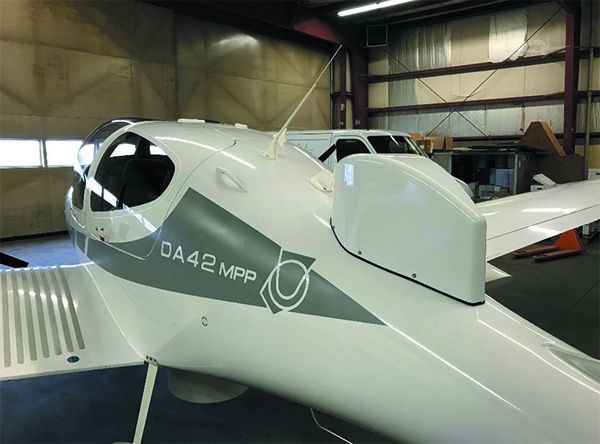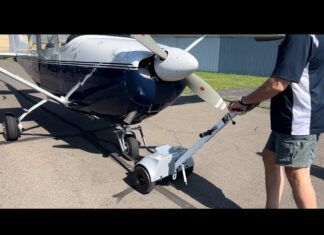Even as the COVID-19 pandemic worsens in the U.S., the aircraft lending boom has created a feeding frenzy in the used market. Who knows when it will all come crashing down, but for now aircraft values are up—way up—and those who might not have considered aircraft ownership are taking the plunge. And some are getting stung.
One way to avoid traps is to avoid complicated deals. While it may be tempting to jump on a seemingly good deal on an aircraft in another country, closing that deal may be more difficult than you bargained for (if not impossible). The same goes for certain leaseback situations, and aircraft with unique modifications. There’s also the dilemma of a hardening insurance market. The takeaway: Keep it simple.
We recently spent some time with a reader who was considering purchase of a European-registered Diamond DA42. It was equipped with a number of surveillance mods that could be used in his business and that some local operators were interested in leasing back as a multi-engine trainer or Part 135 charter airplane.
The asking price was about half of what we were seeing for similar vintage DA42s in the U.S.
LOW PRICE
The relatively low price got our attention, but not in a good way. We’ve seen too many buyers get bitten badly when they thought that they were getting a great deal on an airplane several states away only to find out downstream that the airplane was in terrible shape. We worked with one pilot who bought a Cessna 310 from a broker—1000 miles away—for half the going price because the broker assured him that the airplane was his running errands machine and he needed some quick cash. Long story short, the buyer wound up paying twice what he’d paid for it in repairs and tried to sue the seller, only to find out that he was bankrupt.
The lesson is that there are no great airplane deals to be found across the country. If the airplane were really that great for that price, a local would have snapped it up long ago. If it’s cheap and it’s been on the market for more than a few weeks, the locals know it’s a piece of junk.
If the airplane is more than a basic piston single, keep in mind that professionals in the general aviation aircraft world are constantly looking for good airplanes that they can buy inexpensively and put into revenue service with only a little work. If they have passed on the super deal that you’re considering, they may know something you don’t.
With the above as a caution, we’ll look at major questions we think anyone considering buying an airplane under what we call complicated circumstances—any combination of overseas registry, significant modifications, high performance and/or going onto a leaseback after purchase—should have answered definitively before closing the deal.
And—before going any further—in today’s “hard” insurance market, don’t even start to negotiate a deal until you are certain that you can insure the airplane.
IMPORTING AN AIRPLANE
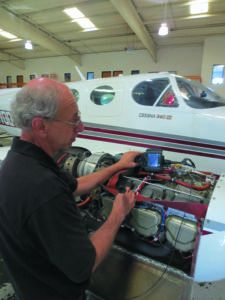
When you add the challenge of bringing a foreign-registered airplane into the U.S. and obtaining a U.S. certificate of airworthiness to any aircraft purchase, we think that the opportunities for an expensive snag to occur increase exponentially (conservative estimate). We’ll walk through an abbreviated checklist of what’s involved with buying an airplane overseas and getting it to the U.S. and legal for operations.
• Clear title. How can you be certain that the seller has good title to the airplane and that there are no liens? While the broker who is selling the airplane may offer to help you with this, and other issues, remember that the broker’s fiduciary responsibility is to the seller, not you. He or she owes you no real duty.
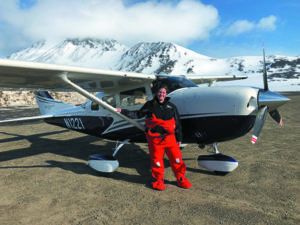
Depending on the country where the airplane is registered and located, you may have to hire a local attorney—not one recommended by the seller’s broker—to assist with the sale and do such things as a title search. If the airplane is not located in the country where it is registered, consider it a red flag or at least a potential expensive complicating issue in the sale. It may be possible to hire an aircraft broker to represent you and handle much of the sale details, including title work. That varies by country.
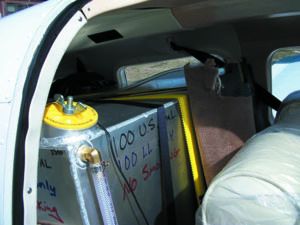
• Prebuy examination. Never, ever omit a thorough prebuy and never, ever have it done by someone who has had any connection with the airplane previously. The 310 buyer we mentioned above had the prebuy done by a mechanic the broker recommended. Not surprisingly, the mechanic found no issues.When things went south, the buyer tried to sue the mechanic; however, the invoice for the “prebuy” that the mechanic did read “oil change.”
We think that it’s a good idea for a prospective buyer be present for a prebuy examination. That’s expensive on an international purchase—but more expensive to not be there.
TEST FLIGHT
We think a prebuy examination should include a test flight. Because most countries require that a pilot have a certificate issued by the country in which the aircraft is registered, coordinating a test flight may take a little work. Do the work.
• Sales agreement. You’ll need a sales agreement that allows you to do a prebuy and test flight and lets you walk away if the airplane doesn’t meet your standards—and that can be turned into a final contract. The laws of the country where the sale takes place control this agreement as we’ll as whether you can arrange to put money and the title into escrow pending closing. You’re not in Kansas anymore—you will probably need a lawyer.
• Ferrying the airplane. Unless you have considerable experience with transoceanic operation of general aviation airplanes—and compliance with the appropriate regulations—plan on $25,000 to $30,000 to either hire a ferry company or to crate and ship the airplane.
• Import. You’ll need to comply with U.S. Customs paperwork requirements to get the airplane into the country (the ferry company often handles this), register the airplane in the U.S. and obtain a standard airworthiness certificate. This involves what amounts to a detailed inspection to ensure that the airplane confirms to the FAA Type Certificate Data Sheet.
That’s usually not a big deal although there may be airworthiness directives that require compliance.
NOT MADE HERE
Things start to get difficult if the airplane was not manufactured in the U.S. and the manufacturer didn’t seek FAA certification for the type of airplane or if the U.S. certification didn’t match the foreign certification. The question of whether it will be possible to bring the airplane into type certificate conformance for a reasonable price must be answered prior to making a purchase decision.
In our opinion, not being able to easily N register an airplane is a deal breaker.
HOW ABOUT MODS?
The surveillance mods on the DA42 we discussed with the reader—such as forward-looking infrared cameras (FLIR)—may or may not have to be removed to jump through the N-registration hoops. They may be OK under an STC, but that needs to be confirmed prior to the sale—you don’t need an expensive surprise after you’ve bought the airplane and paid for the special equipment.
BREXIT
We obtained much of the import information via the kind assistance of Derrick Ings, proprietor of the Gillingham, Dorset, England-based Derrick Ings Aircraft Sales. He issued a caution for anyone considering the purchase and import to the U.S. of a British-registered aircraft. As of the beginning of 2021, the British will have left the European Union and the authority of the EASA. As of the date of this writing, there is a black hole in the aviation world where United Kingdom aviation used to be. Until the effects of Brexit on general aviation with regard to ownership and certification are known, we recommend that a person intending to buy a U.K.-registered aircraft for import to the U.S. proceed with great caution.
PLANNED USE
“How can I make the airplane pay?” Finding a legitimate way to cut the cost of aircraft ownership is the holy grail for many buyers and a major reason buyers select more airplane than they need for personal use. We have talked to a lot of prospective buyers with inchoate plans to make the airplane pay once they have it in hand. Often a flight school or Part 135 operator has made reassuring noises about using the airplane in a leaseback arrangement or the owner’s employer will reimburse business travel in the airplane.
We cannot overemphasize the need to do all of the homework on whether the airplane can generate revenue, have a reasonable expectation as to how much and have any prospective leaseback agreement reduced to writing before closing on the purchase. Especially when trying to make money with an airplane, no deal is final until it’s written up and signed.
Standing in front of the flight school with your new purchase with the “I’m ready to sign the deal now” look on your face is setting yourself up for no deal or one significantly less advantageous than you were hoping for.
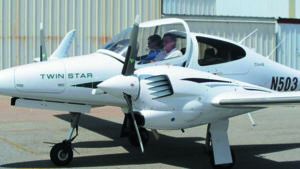
Receiving 80-85 percent of the revenue from each flight your airplane makes under a Part 135 charter operator’s leaseback agreement sounds like a sure thing when it comes to cutting ownership costs. The reality is that 85 percent of the revenue may not be enough to break even. Yes, we’ll tell you why.
You will be responsible for maintenance, fuel and possibly, pilot training, for all of the Part 135 operations. Of that, maintenance is the big deal. While the leaseback agreement should give you a reduced rate on maintenance—not getting that is a deal breaker, in our opinion—the extent of the maintenance required by Part 135 will probably astonish you if you are used to Part 91 operations.
First of all, manufacturers’ service bulletins are no longer optional. A Part 135 operator has to comply with all of them. In addition, any TBOs published by manufacturers become mandatory (although some operators can get extensions on some). So, that six-calendar-year TBO on your prop that you’ve happily ignored will be mandatory. If you’re like most owners who monitor engine condition and run them we’ll beyond TBO because they are in good shape, under Part 135 you won’t have that option.
This all comes to a head because you’ll pay to get the airplane put onto the operator’s certificate and all of that service bulletin and TBO compliance has to happen right then. Even for a single, it’s going to be eye wateringly expensive. Not long ago we talked with a 135 operator about his experience adding airplanes to his certificate. He told us that it took 90 hours of labor and 15 hours of paperwork to get a “nice” Cessna 182 into 135 compliance. For a 185, he had to overhaul everything forward of the firewall, which cost $53,000 not including his shop’s labor.
Getting the airplane added to the operator’s air taxi certificate (which also involves creating a training and maintenance manual that must be FAA approved) takes from two to eight months (pre-COVID-19) if all goes smoothly and the airplane is plain vanilla. If the operator hasn’t had experience with the type and/or it has a number of mods via STC installed, the time and cost go up.
Bottom line—you will be writing big checks for several months before the airplane makes its first revenue flight, with the definition of “big” going up with the complexity of the airplane. Make certain you know what you are getting into and have the necessary capital to pull it off.
LEASEBACK
Considering leasing your new acquisition to a Part 135 charter operator to cut your costs? Take a deep breath and read the sidebar on the opposite page.
Leasing back to a flight school does not require the dramatic maintenance process that Part 135 does. The airplane usually goes on the line as is, but you’re still responsible for maintenance costs, although maybe not fuel.
Remember how things went when you were learning to fly or adding a rating and some of the landings you made? Yep, that’s what’s going to happen to your airplane if it’s used for training. If it’s a twin, those engines are going to be shut down and feathered and restarted and pulled to idle suddenly again and again and again.
And … it’s a rental. Think how you have treated rental cars in your lifetime. Did you always clean them out after you drove them? Right. And there were those times you hoped the agency wouldn’t notice the condition when you brought it back.
That’s what’s going to happen to your airplane. If that’s OK, press on, but go into the deal with your eyes open.
Finally, are there any STCs on the airplane that personalize it for you but potentially disqualify it as a rental because it’s too different from the rest of the training fleet?
BUSINESS TRAVEL
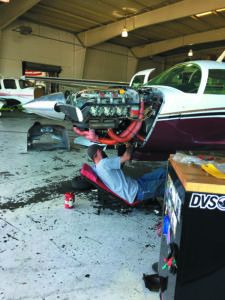
FAR Part 61.113(b)(1) allows you to be reimbursed for expenses of flying your airplane on travel incidental to your business. You are getting compensated for flying, which is prohibited under most of Part 91, but here the FAA makes an exception.
However, your employer cannot compensate/reimburse you for your business flight if you are carrying passengers—61.113(b)(2). If carrying your coworkers on business trips and getting reimbursed for flight expenses is a part of your plan for the airplane, spend some quality time with an aviation attorney to see if it is possible. The FAA’s “Lamb” legal interpretation letter (https://tinyurl.com/y4htvjkx) is a good place to start.
Finding out that you can’t use your airplane for reimbursed business travel after you buy it can be detrimental to your financial health.
CONCLUSION
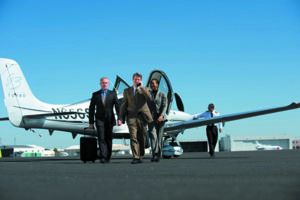
If that airplane looks great because the price is significantly lower than others on the market and there are a few challenges involved, such as importing it to the U.S., but the broker pooh-poohs the challenges, be very, very wary.
Get help from people with expertise on the type of airplane and all of the variables involved—the STCs, prebuy examination, title, U.S. airworthiness. Let none of those people have any connection at all with the seller or seller’s broker. As warbird expert and aviation sage Stan Musick told us: Pay for expertise from people whose obligation is to you—never ask for information from someone trying to sell you something.
We recommend keeping used aircraft purchase transactions as simple as possible. Complexity breeds expense, potentially more expense than the purchase price.

